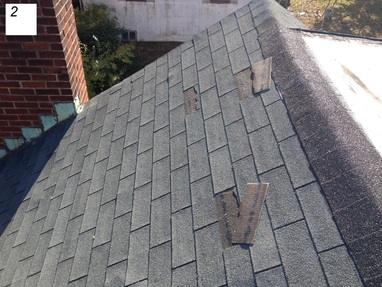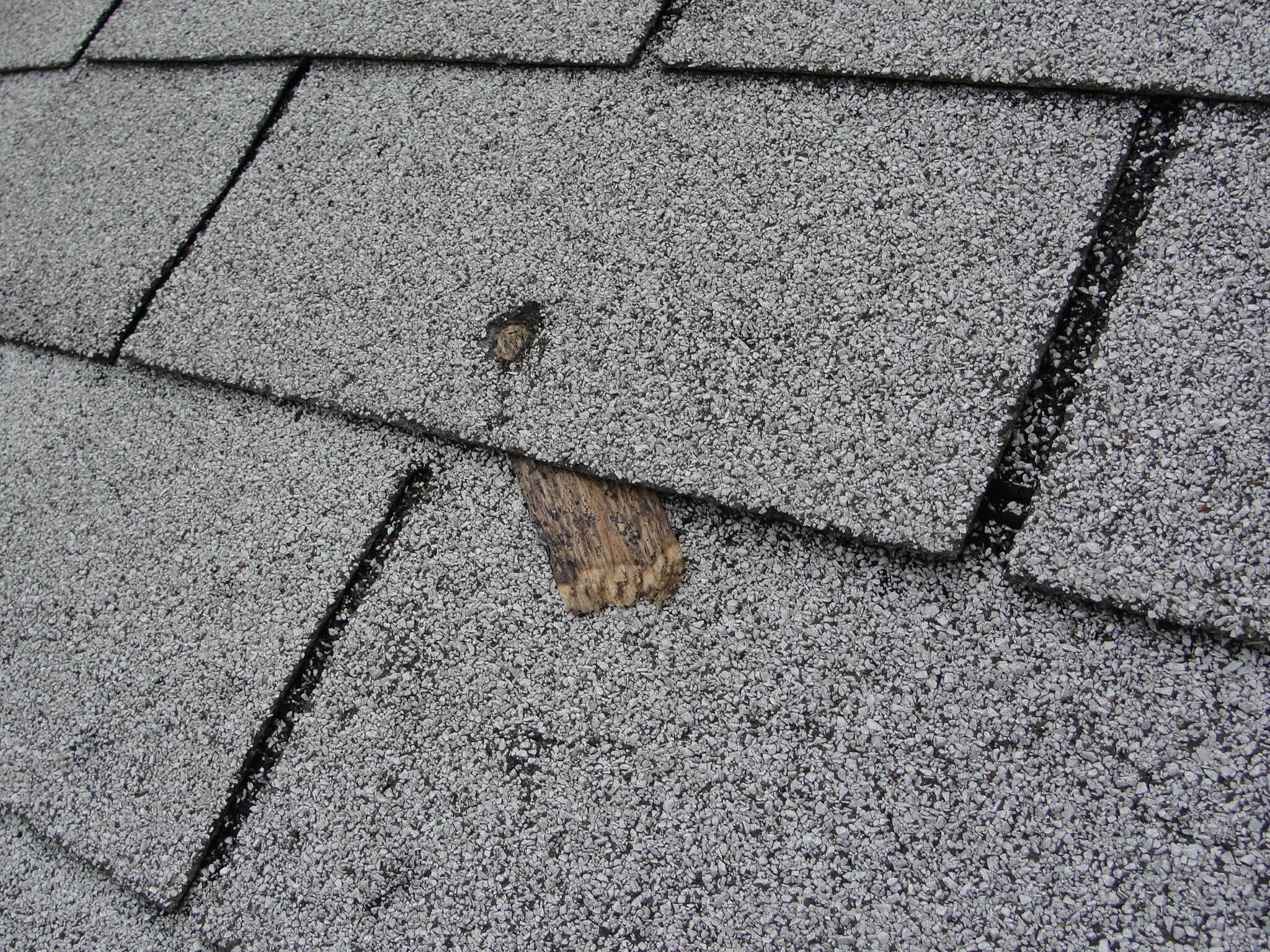VOCs in asphalt shingles provide flexibility for the shingles. A strip of tar on the underside of the shingle( known as a seal) seals one shingle to the next. As a shingle ages, the sun bakes the volatile organic compounds out of the shingle causing them to shrink; the seal to dry out, and cracks start to develop on the surface of the shingle. As the shingle ages and dries out, the coverage starts to shrink. The shingles become brittle, clutch and claw. The granular surface of the shingle starts to wear off making the shingle more vulnerable to deterioration from weather and UV rays. Fasteners become exposed, seals fail, and degranulation progresses. When fasteners become exposed, they rust and water can penetrate through the nail shank opening. The Achilles heel of the asphalt roof installation is the neoprene roof boot. These often wear out about half way through the life of the shingle. Other common considerations are defective shingles, and improper installation.
One formula that should be used when calculating repair or replacement decisions is the following: value of remaining roof life < or = cost of repairs , then replace. Here are some pics of some common problems with asphalt shingles:
Degranulation

Clutching, Clawing

Blow off due to seal failure
Stack flashing failure

Exposed fasteners

Cracked shingles
[/et_pb_text][/et_pb_column] [/et_pb_row] [/et_pb_section]
